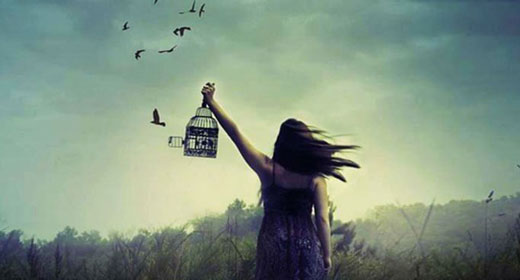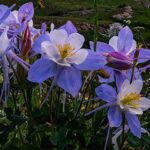by Vicki Noble: Since my introduction to Tibetan Buddhism almost twenty years ago, I have been fascinated by the strong female subtext that runs through it like an underground stream. At the Nyingma Institute in the early 1980s there were images of Tara, but the female in general was still fairly invisible; women attended retreats at the center and helped prepare the Sunday afternoon public dinners, yet were explicitly NOT allowed to ring the dinner bell. Shortly after beginning my Buddhist practice there, I learned from reading Stephen Beyer’s classic text, The Cult of Tara, that Tara was at the heart of Buddhist practice for Tibetans who, Beyer said, called on her every day for every kind of purpose. Over the next two decades, the Tibetan Goddess officially arrived in America along with numerous Lamas and teachers whose unfortunate refugee status has been such a boon to the West. Almost anywhere in America now, one can receive direct authorized transmissions of Dakini practices or get Tara empowerments, and so on.
As a younger feminist I experienced Tibetan Buddhist organizations as a roller coaster ride. Although deeply called to the dharma, I found myself infuriated over what appeared then to be hopelessly entrenched discrimination towards women. I signed up for a three-week retreat to study Kum Nye Yoga, a wonderful Tibetan form developed by Tarthang Tulku, founder of the Nyingma Institute. Our retreat was interrupted halfway through when the Lama requested that everyone in the organization come up to Oddiyan (the retreat center they were developing in northern California near Sea Ranch) and help with completion of the stupa that was being built there. It was urgent that the stupa be finished in time for fire ceremonies to be performed on an auspicious date, the next Full Moon. Retreat participants were invited to come as well, and we happily consented to join the community for this exciting event.
The minute we arrived at the retreat center, all the men in our small group were sent down to the stupa to join in the construction work, while the women were sent to the kitchen to cook and clean. I told the person in charge of our group that I had changed my mind and was going home (“been there, done that”) and he surprised me by calling a special meeting with Tarthang Tulku, the outcome of which was that men and women were allowed to work anywhere they chose at the site without reference to gender. Thus began an exhilarating three days of working from morning till night on the completion of the first stupa to be built in California (in America?). In an almost preternaturally harmonious environment, men and women worked side by side in a focused way for as much as twenty hours a day, and without any observable antagonism or gender charge.
This was my first experience of participating in a group context where a guru was holding a spiritual vision, and the light from that vision was so strong that it held us all inside of its amazing vitality and high-voltage energy. When Tarthang Tulku himself spoke to the group on the final day of the consecration, I saw threads of light emanating out from his heart to the audience and found myself weeping as my heart opened in response. I was certain I had found the community I was seeking. Then as the much-awaited fire ceremony was about to begin, our group was counseled that women might not be allowed to participate in the ceremony! Like a ping-pong ball, back and forth my state of consciousness bounced between joy and anger, moving from moments of profound awe to equally profound cynicism. Now many years later I know that this triggering process belongs to the central tenet of Tibetan Buddhism, which says that it is precisely our attachment to these hopes and fears, desires and aversions, that causes our perpetual suffering — but at the time I took every nuance personally. Luckily for me that day, not only did this very flexible Lama decide to let women participate in the important fire ceremony, he even asked his two young daughters to help officiate (“priestess”) the event.
Three years later Dharma Publishing in Berkeley brought out the first English translation of the biography of Yeshe Tsogyal, the female cofounder of Tibetan Buddhism whose image is so often shown intertwined in sexual union with that of Guru Padmasambhava in the traditional “yab-yum” (father-mother) thangkas painted by Tibetan artists. At the center and in the foreground of most Tibetan meditation centers one will still always find the famous male magician (yogi) and founder supposed to have flown in from Oddiyana with a retinue of dakinis to anchor Buddhism in Tibet during the 8th century C.E. The first Tibetan mantra I learned at the Nyingma Institute was his special invocation, OM AH HUM VAJRA GURU PADMA SIDDHI HUM, which I chanted every day for the next fifteen years. At Pema Osel Ling, the Vajrayana center down the hill from where I lived for several years in the mountains near Santa Cruz, California, a monumental statue of Padmasambhava graces the shrine room. Brightly painted and incredibly beautiful, with huge eyes that actually seem to be looking at you, the statue dominates the large room and commands the attention of worshippers during ceremonies held there. Likewise, during my three-week pilgrimage through Tibet in May 2007, the Guru’s image was ubiquitous. Every monastery and cave we entered featured his statue, painted thangka, or wall mural.
The first translation of Yeshe Tsogyal’s story was Tarthang Tulku’s Mother of Knowledge: The Enlightenment of Ye-shes mTshr-rgyal, which became my sacred text — I underlined almost every word in the book. In the late 1980s, when I created the Motherpeace School for Female Shamanism in Oakland, I used the book as a text for my students. In the publisher’s introduction to the Tulku book, we’re told that “all of Padmasambhava’s teachings came to us through Ye-shes mTshro-rgyal,” who “received all of (his) teachings, as if the contents of one vessel were poured into another…. Her accomplishments and realizations have seldom been equaled, and the merit of her actions is beyond description” (Tulku xxiii). Most of the biography is a telling of her amazing yogic abilities (“siddhis”) and “miraculous bodily transformations” that she exhibited through her long life of service (Tulku 33). Her awesome powers make her a more than adequate role model for contemporary yoginis.
From the time of her conception and birth, Yeshe Tsogyal’s life consisted of wholly extraordinary events, accompanied by earth changes, signs, and omens. Beyond being merely precocious, by the age of ten she had “matured into a woman of extraordinary beauty in both face and form…. Soon large numbers of people were coming from the many lands of Tibet, China, Mongolia, Turkestan, Nepal, and more — just to look upon her.” But in 8th-century Tibet the status of women had fallen to that of chattel and Yeshe Tsogyal — although a princess of Chärchen and therefore of higher rank than others — still had to put up with the challenges facing the women of her time. Suitors came to ask for her hand in marriage and, to avoid conflict among the lords and rulers who wanted her, her father and mother decided she should choose. But she pleaded with her parents: “To go with either of these men would be to enter the prison of samsaric suffering, from which it is so very difficult to escape.” Her father — angered by her refusal — sent her away, saying “whoever finds you first shall have you.” She was led away, dressed in “fine silks,” in a caravan of “one hundred laden horses and yaks to face whatever disasters lay ahead” (Tulku 22).
Beaten bloody by the thorn whip of the man who caught up with her wanting to be her husband, she “fell before them like an arrow. The soldiers were delighted and danced around, singing with joy” (Tulku 23). When the soldiers became drunk with beer and fell asleep, she fled, “running more swiftly than the wind… through valleys and mountain passes.” (“Fleet-footedness” is one of the supernatural “siddhis” or powers of the famous Indian yoginis from the same time period.) After some time spent free in the wilderness living near a cave as a yogini, “wearing only cotton garments and living on fruit,” she was again captured and carried off by one of the suitors (Tulku 25). More fighting amongst the suitors occurred; her father the King threw up his hands until the Sovereign King of Tibet asked for his “wonderful and beautiful daughter,” to which her father agreed and Tsogyal, whether she liked it or not, was finally married off to the highest bidder.
This King encouraged Tsogyal to study the dharma and brought teachers for her, including the great Padmasambhava, to whom he made offerings (a mandala of silver with clusters of gold, and a mandala of gold with ornaments of turquoise), even offering “the whole of his realm as if it were a symbolic mandala…” (Tulku 28). The Great Teacher refused to “barter Dharma with material goods”(Tulku 29), but at the continued pleading of the King, came forth with the following proposition: “I myself am unsullied by desire or lust; and such faults as attachment do not exist in me. But a woman is a necessary accoutrement to the secret teachings…” Listing the necessary qualities in “such a one,” he explained that without her, “the maturation and liberation practices are obstructed; the result, the achievement of the secret teachings does not occur” (Tulku 30-31). The King, understanding the bargain, removed his crown, bowed low to the magician, and besides the usual gifts and offerings, “he gave Padmasambhava the Lady mTsho-rgyal.” (Tulku 31) The guru and the Queen went off to engage in the “secret practices” wherein he would pour from his vessel into hers — kind of an archaic Eastern variation on the Western story line in which the prince marries Cinderella and they “live happily ever after.”
June Campbell’s 1996 book, Traveller in Space, offers a fascinating deconstruction of the Lamaist traditions in Tibetan Buddhism from the point of view of her own personal history as a “secret consort” of the Kalu Rinpoche. Unlike Lamas of the Nyingma tradition who can be married or have consorts, the Kalu Rinpoche belonged to a different lineage, one that required him to take vows of celibacy. He was therefore presumed by his followers to actually be celibate, which is what made the exposure provided by Campbell’s book so compelling to readers and embarrassing to Buddhism. However, Campbell’s feminist psychoanalytic critique of Tibetan Buddhism focused not on moralistic grounds (breaking of celibacy vows), but on the lack of female subjectivity involved in the practice. The female is perceived as “a required complement to the centrality and subjectivity” of the male. The dakini, Campbell says, “rarely enters the frame as the mistress of her own domain… but rather takes her identity from her role as a complementary force,” which she says might make sense for men, but is problematic for women as it “casts them always into the role of helper” or simply “other” (Campbell 129).
As Campbell points out, the word dakini is ambiguous, since etymologies of the supposedly interchangeable words dakini (Sanskrit) and khandro (Tibetan) are actually not related. While dakini has a male counterpart (daka), the pertinent word khandro (“sky-goer”) has no such male equivalent. Campbell believes khandro arose “not out of the Sanskrit background of Tantra… but apparently from the shamanistic roots of Tibet itself” (Campbell 145). She connects the word with ancient goddesses associated with the heavens, making me think of the “Priestesses of the Winds” from Linear B scripts found in Bronze Age Crete and Mycenae, or the Valkyries of later Norse mythology. Even medieval European witches were believed to fly through the skies in their nocturnal assemblies, and although this may seem like a far-flung comparison, recent archaeological research suggests otherwise.
In my book, The Double Goddess: Women Sharing Power, I made significant historical connections across the Silk Route, linking the Bronze Age Aegean Island cultures (such as Crete) with the mummies of the Tarim Basin and later (8th-century C.E.) Yoginis of Orissa in India (Noble 2003). Some of the best-preserved “Tocharian” (Caucasoid) mummies unearthed in China (which was then Tibet) are from Cherchen (Yeshe Tsogyal’s Chärchän). They were buried wearing the woolen twill clothing that connects them with the concurrent (1200 B.C.E) Bronze Age European Hallstatt culture (Barber). Some of the mummies had on robes of dark red soft wool like those Tibetan Lamas and nuns still wear today. A later wave of immigrants to the Tarim Basin from the West (5th century B.C.E.) included three women wearing tall black conical hats that led Victor Mair and James Mallory to call them “The Witches of Subeshi” (Mair & Mallory).
One might assume that viewing a woman as property would be frowned upon by contemporary Buddhists. Yet a recent popular Shambhala publication lists the “Precious Queen” as one of the necessary “Seven Possessions of a Chakrvartin” (“great man”), the others being a “Precious Minister,” a “Precious General,” a wheel, jewel, horse, and elephant. They are said to be part of his mandala, emerging at his birth as both the symbols of his power in the world and the magical means of its accomplishment (Beer 161). So who is this “Precious Queen” and from what lineage does she derive? I contend that the more ancient “Shaman High Priestess” became the “Precious Queen” under patriarchal rule, and that she comes down to us today in the office of the “Secret Consort.” The question is especially apt since the tantric tradition, as expressed through the words of Padmasambhava (in the biography of Yeshe Tsogyal), explicitly states that without “such a one,” the yogic accomplishments desired as the result of the secret teachings will “not be accomplished.” Elizabeth English restates this understanding: “According to the methodology of mahamudra, women are necessary to the sadhaka because they are his chief soteriological[1] tool” (English 91). The question naturally arises: If a woman is so auspicious to the (male) practice, then isn’t it even more auspicious to BE a woman?








































